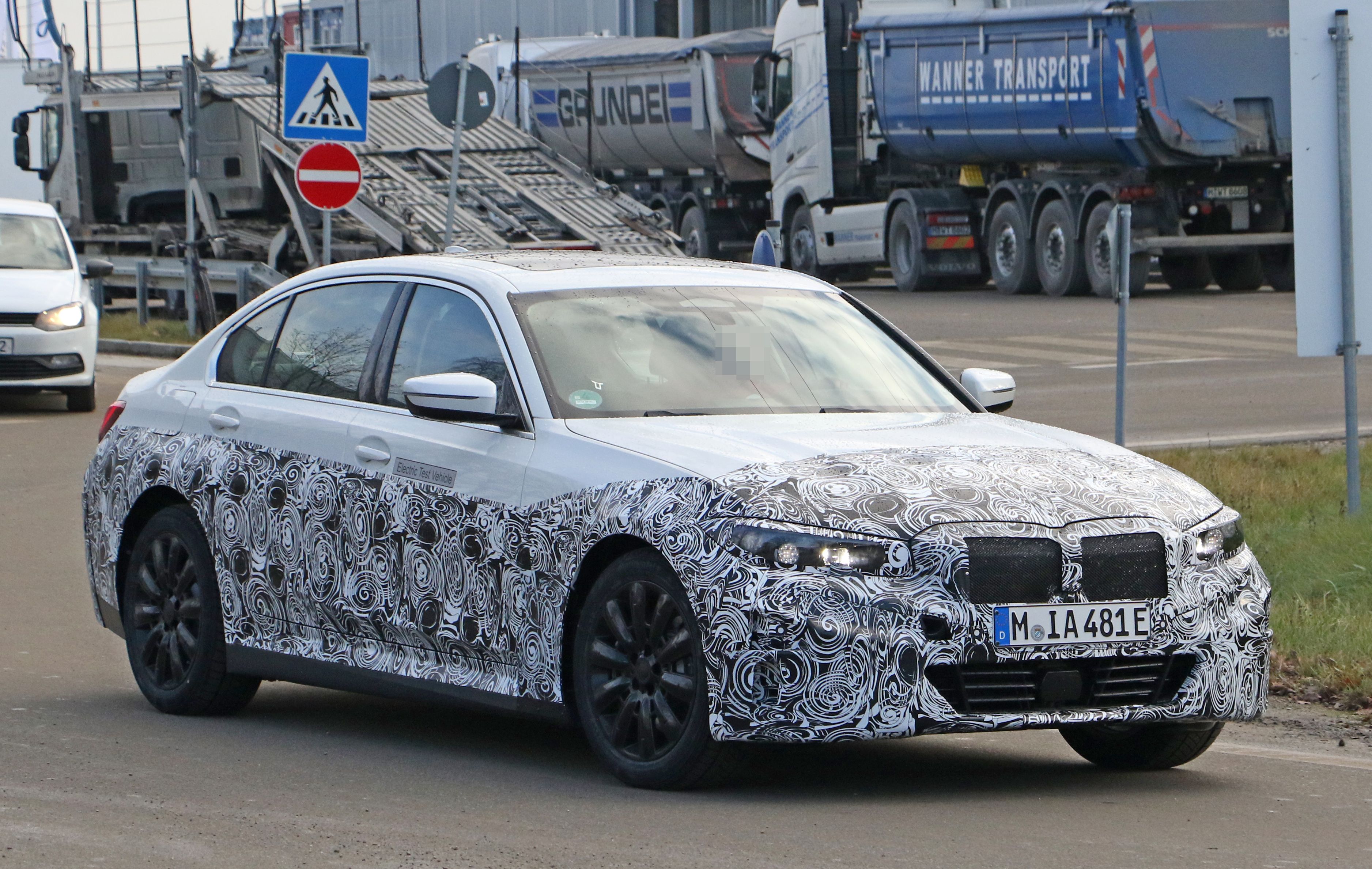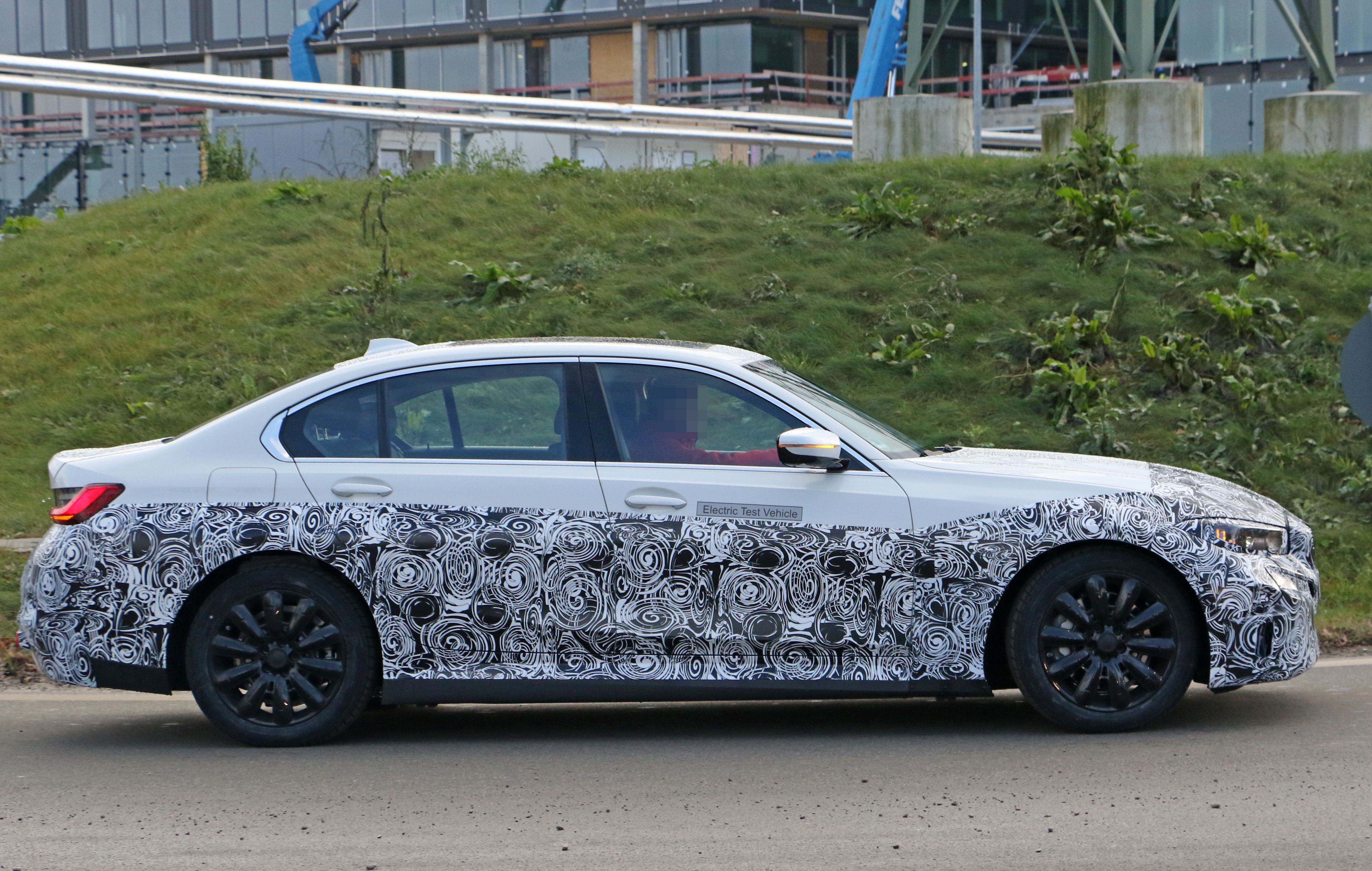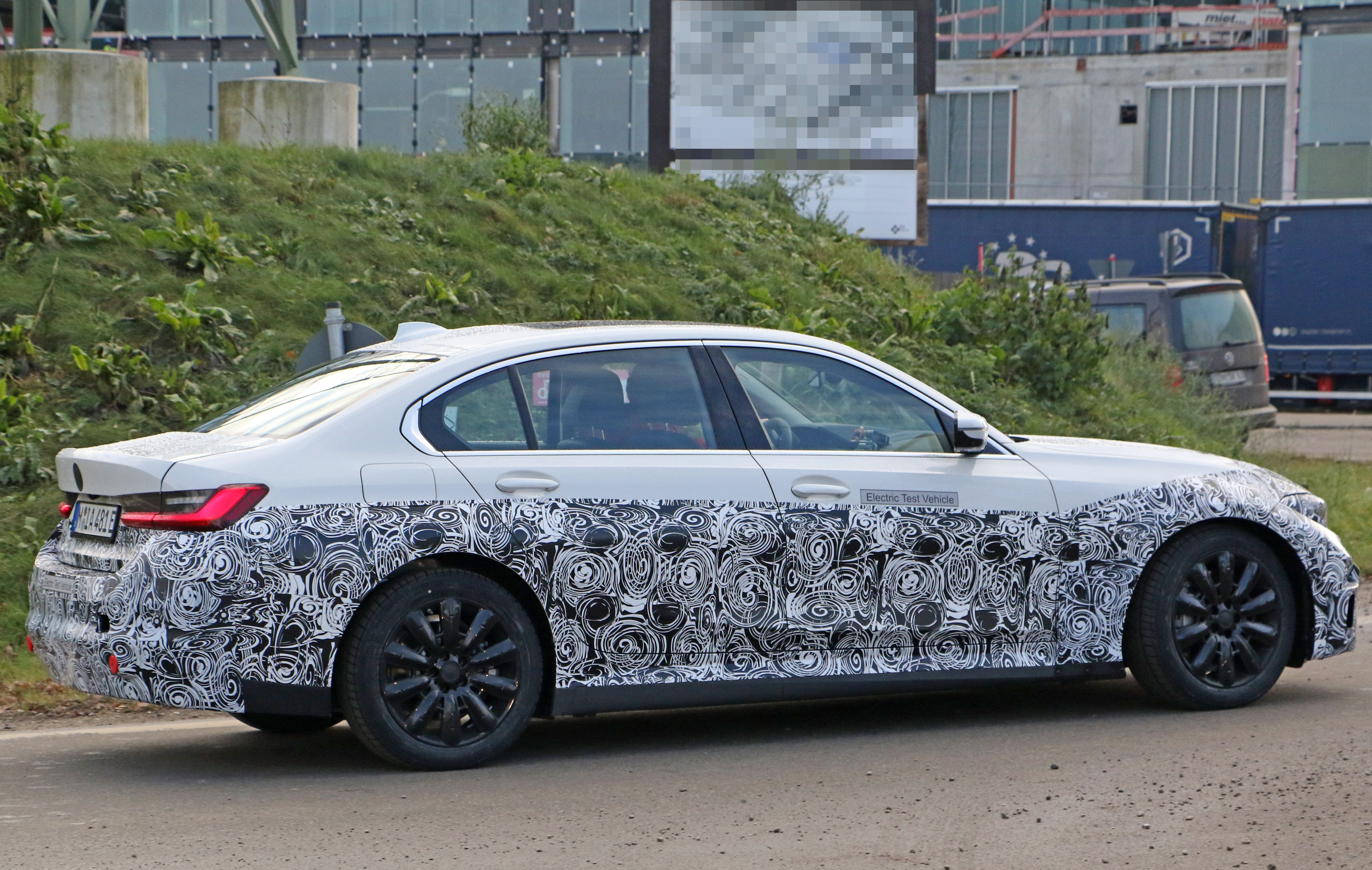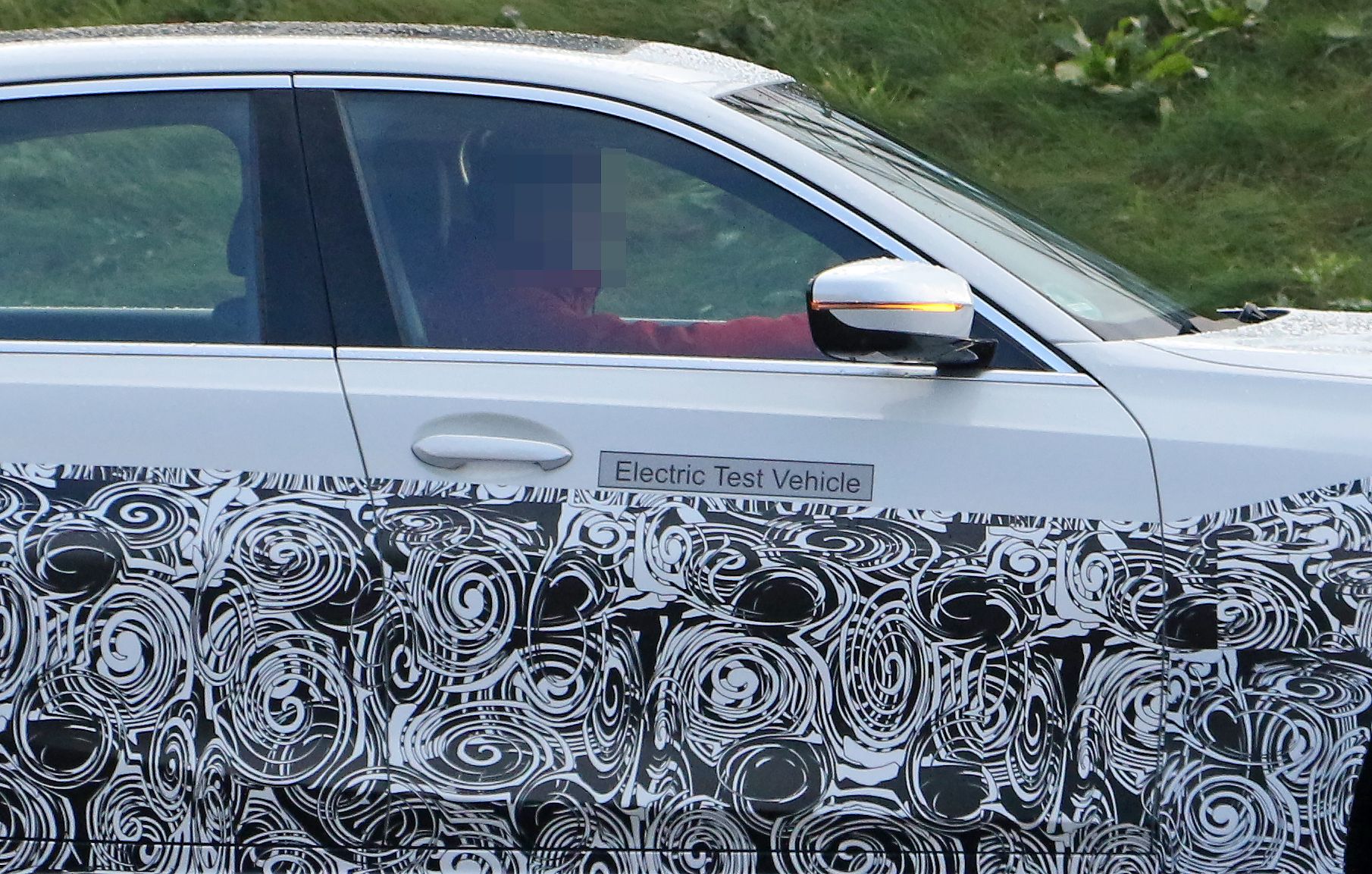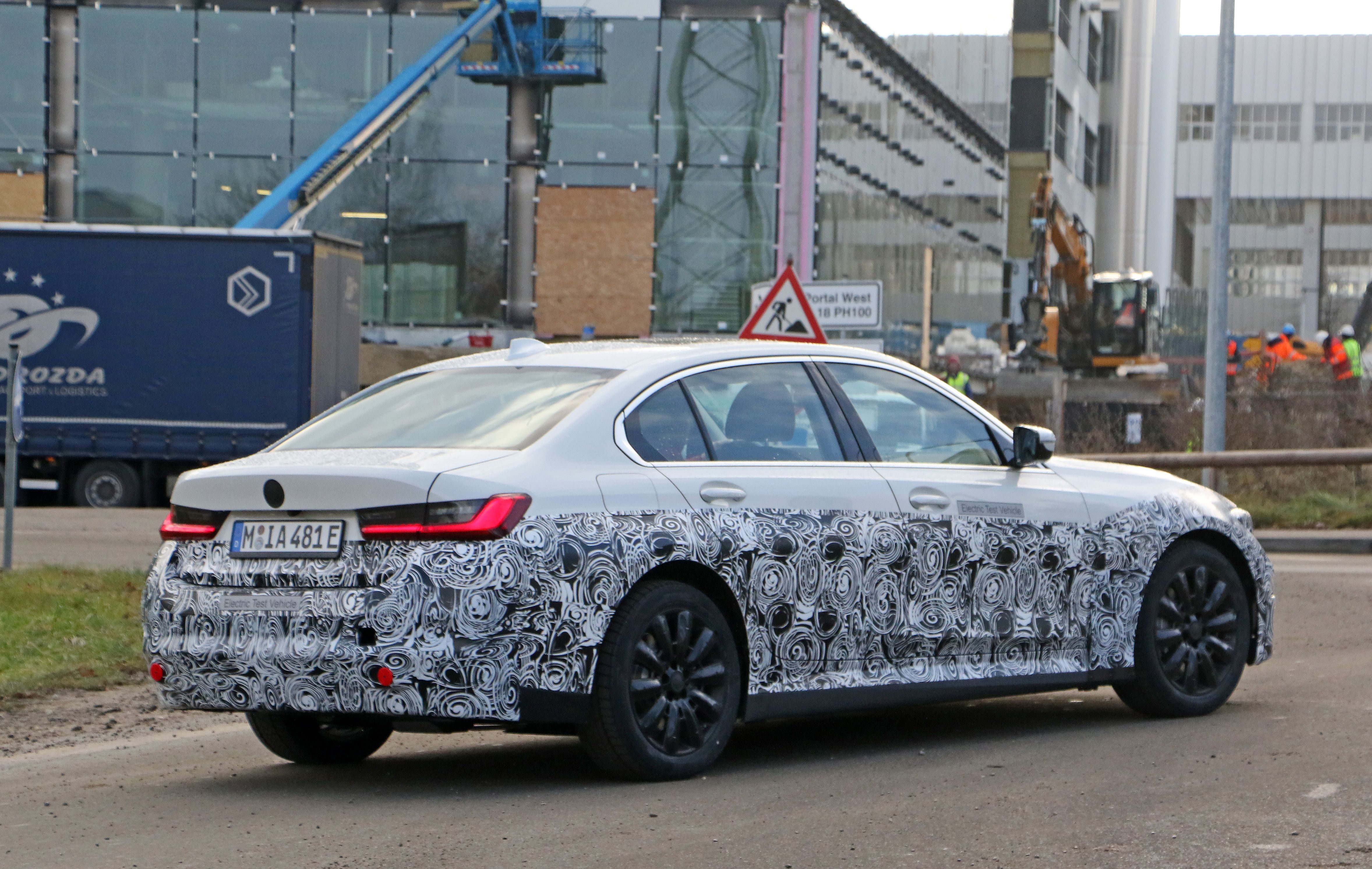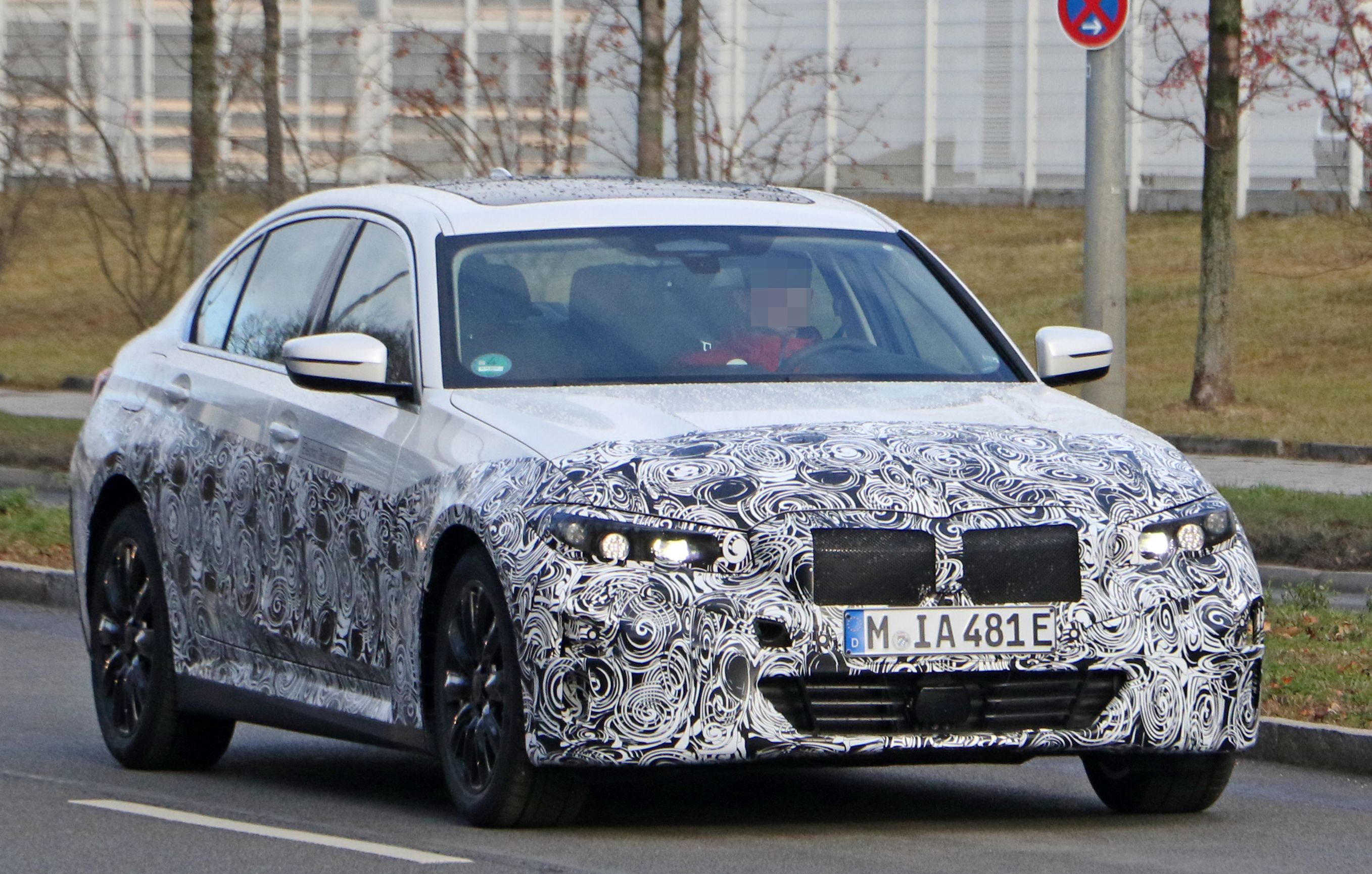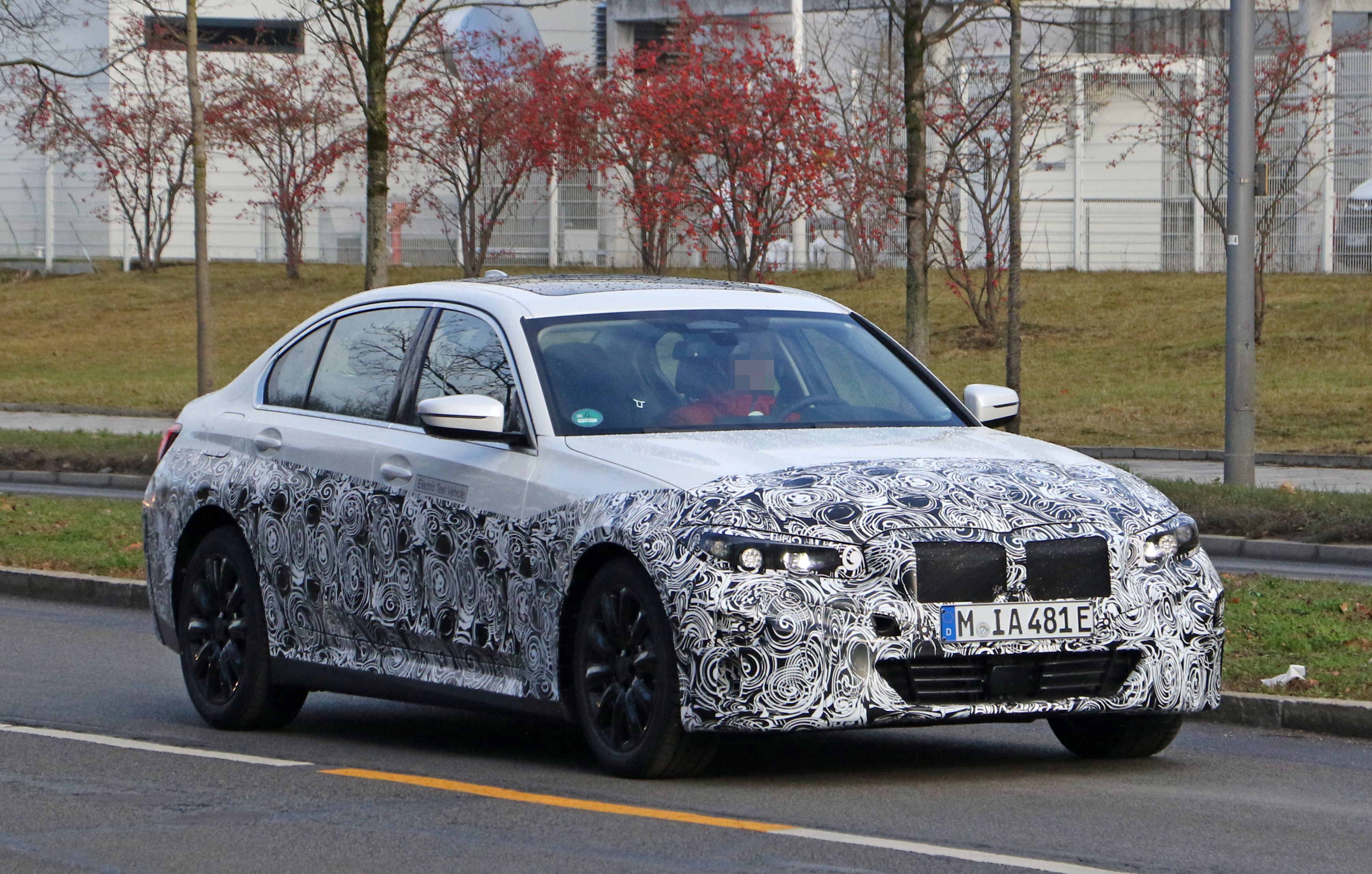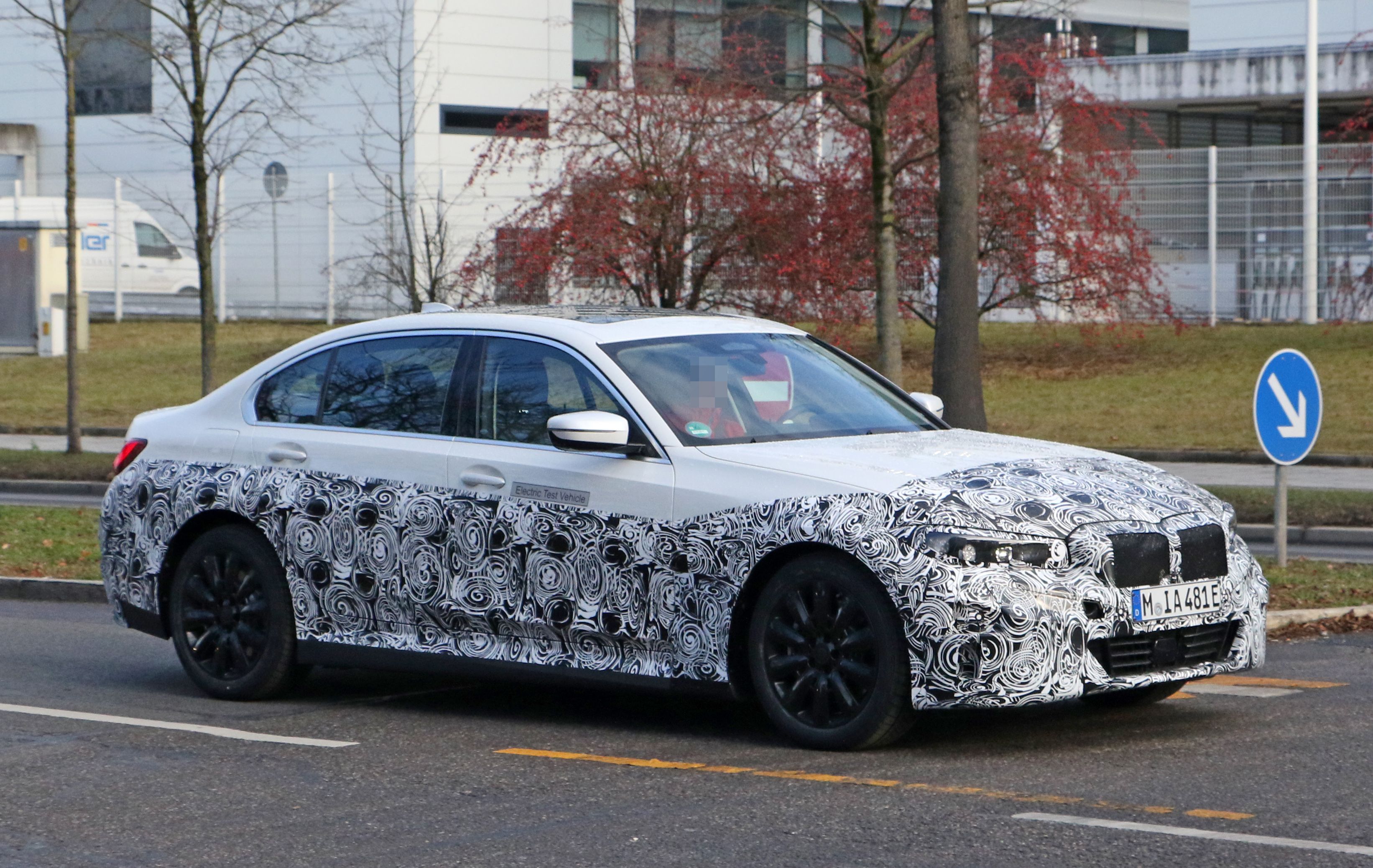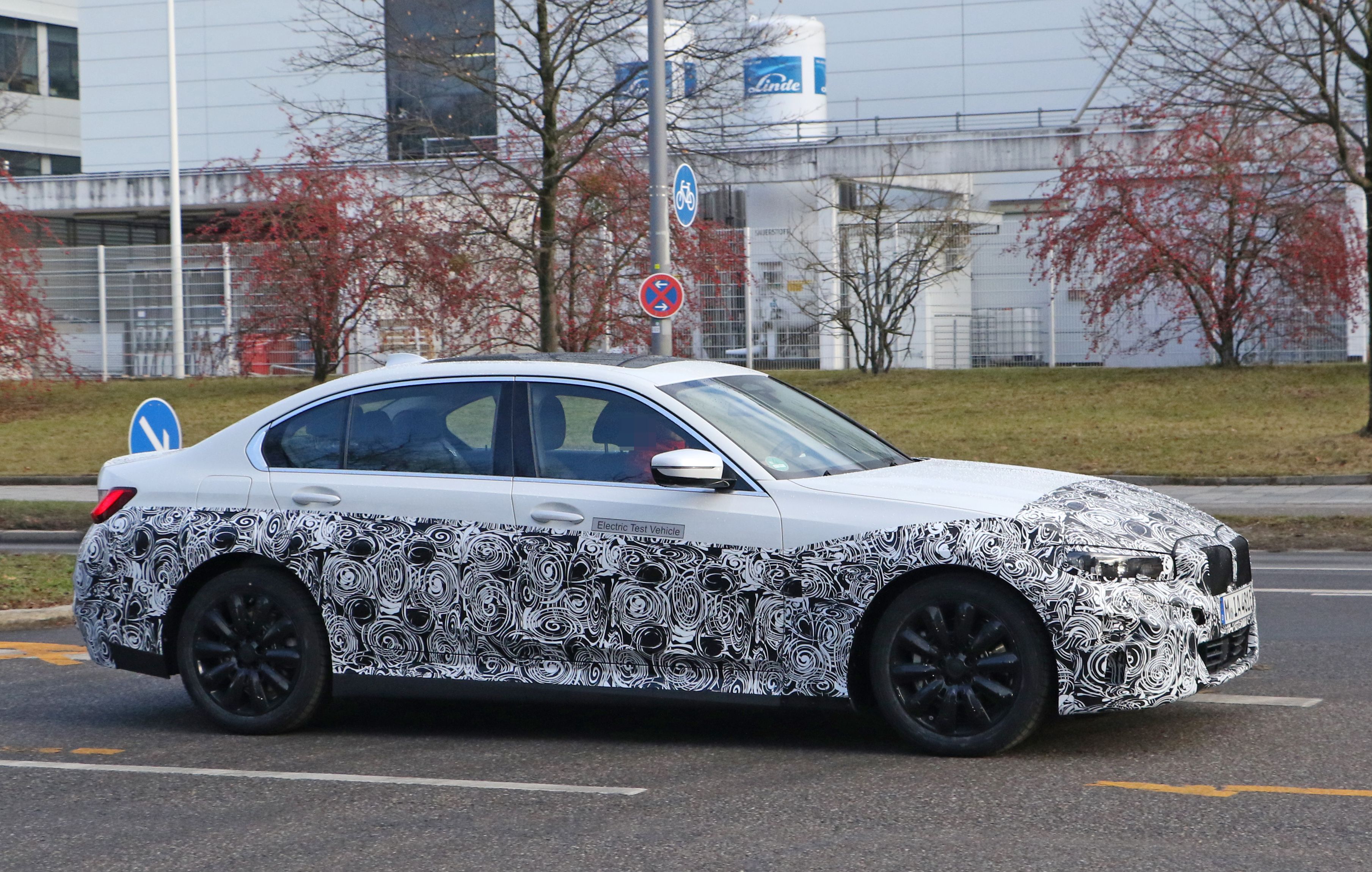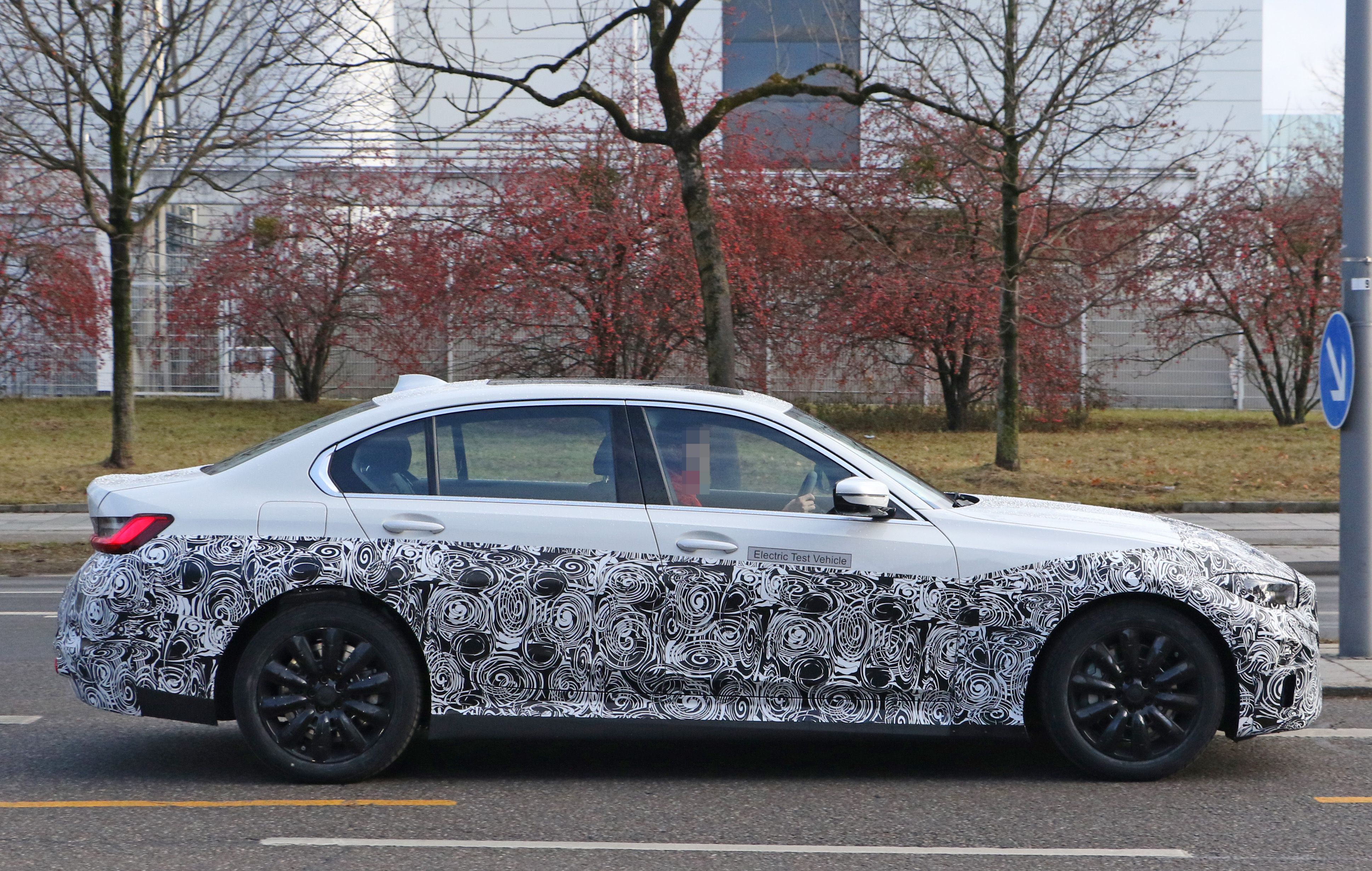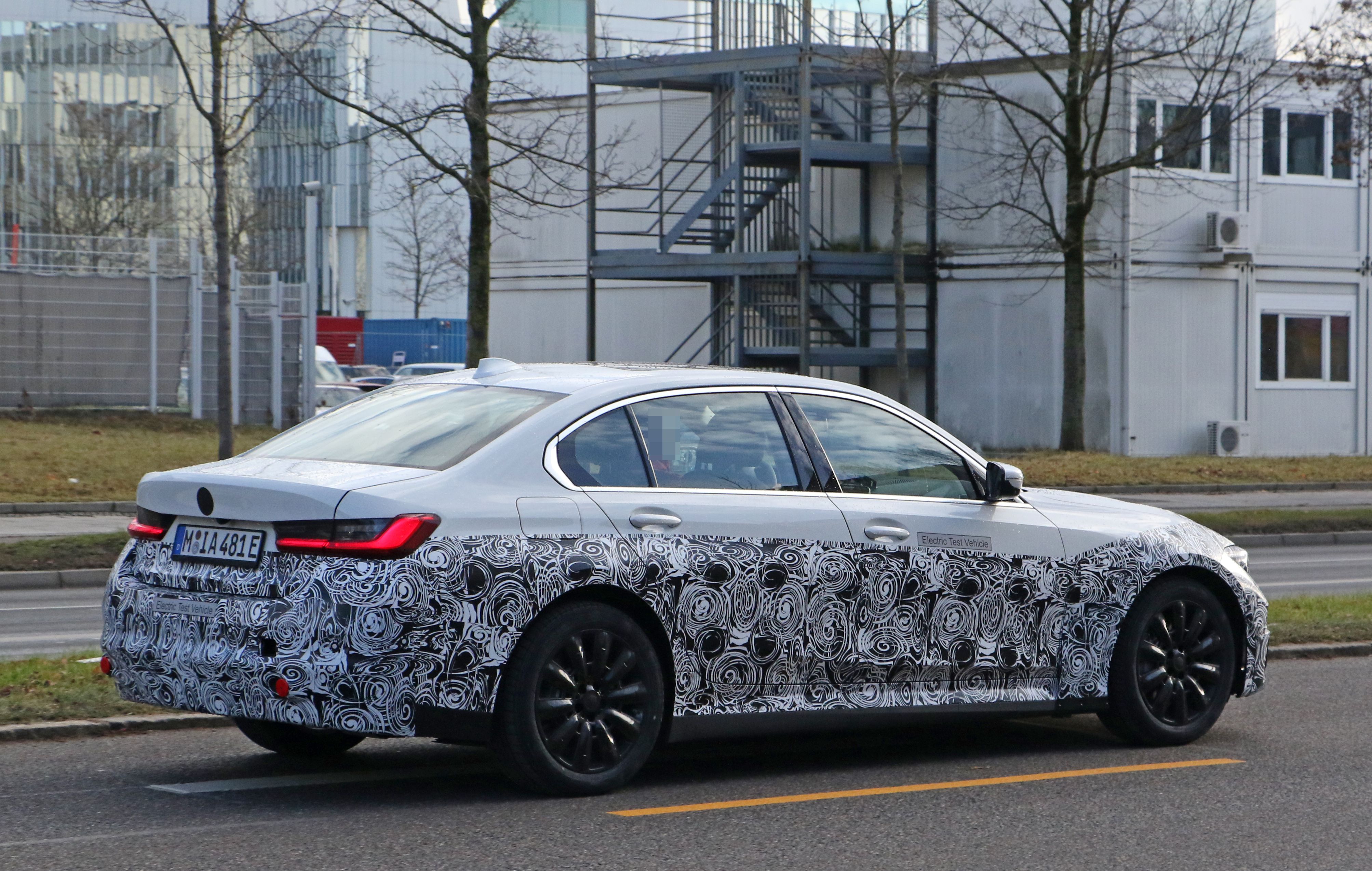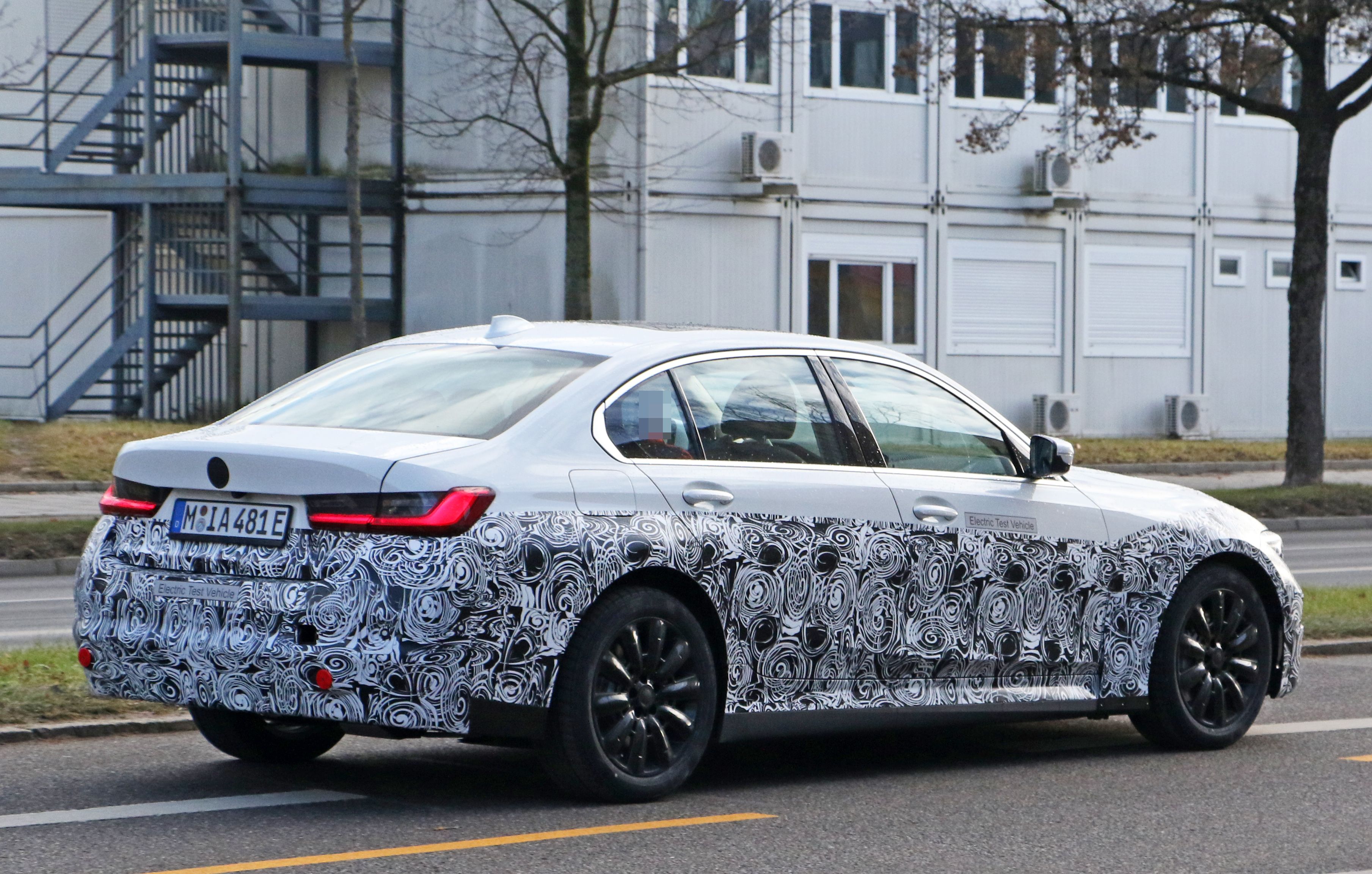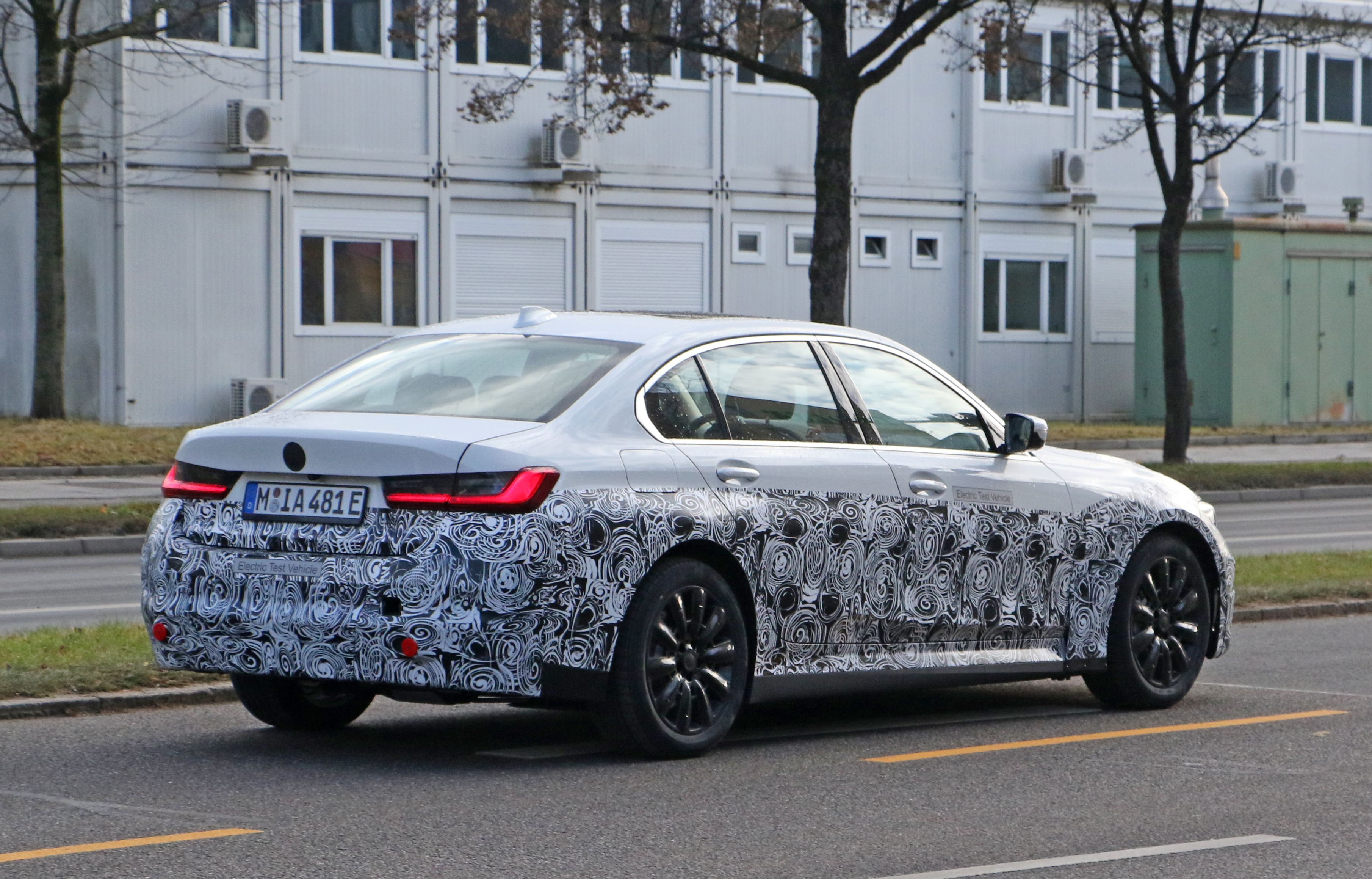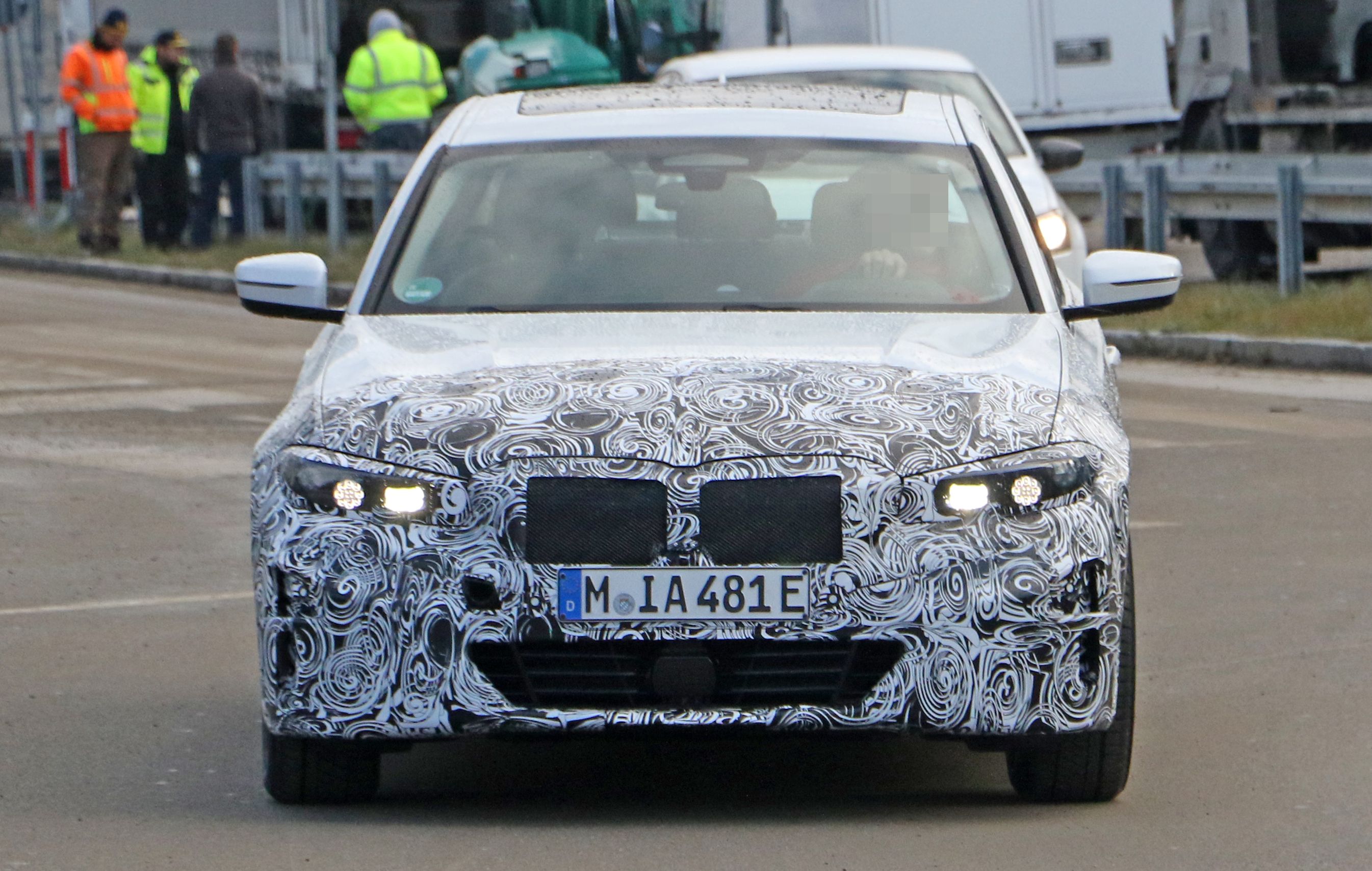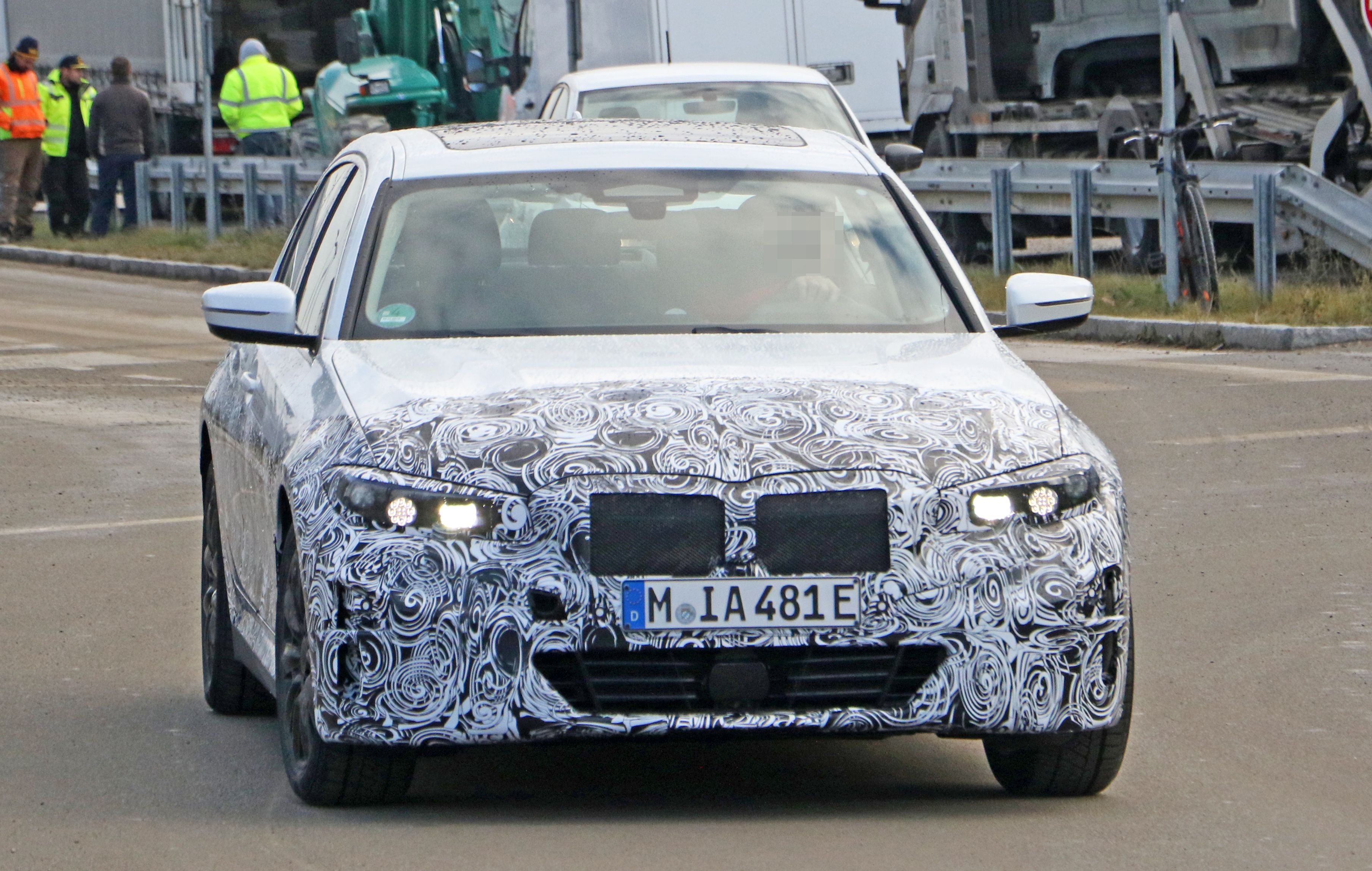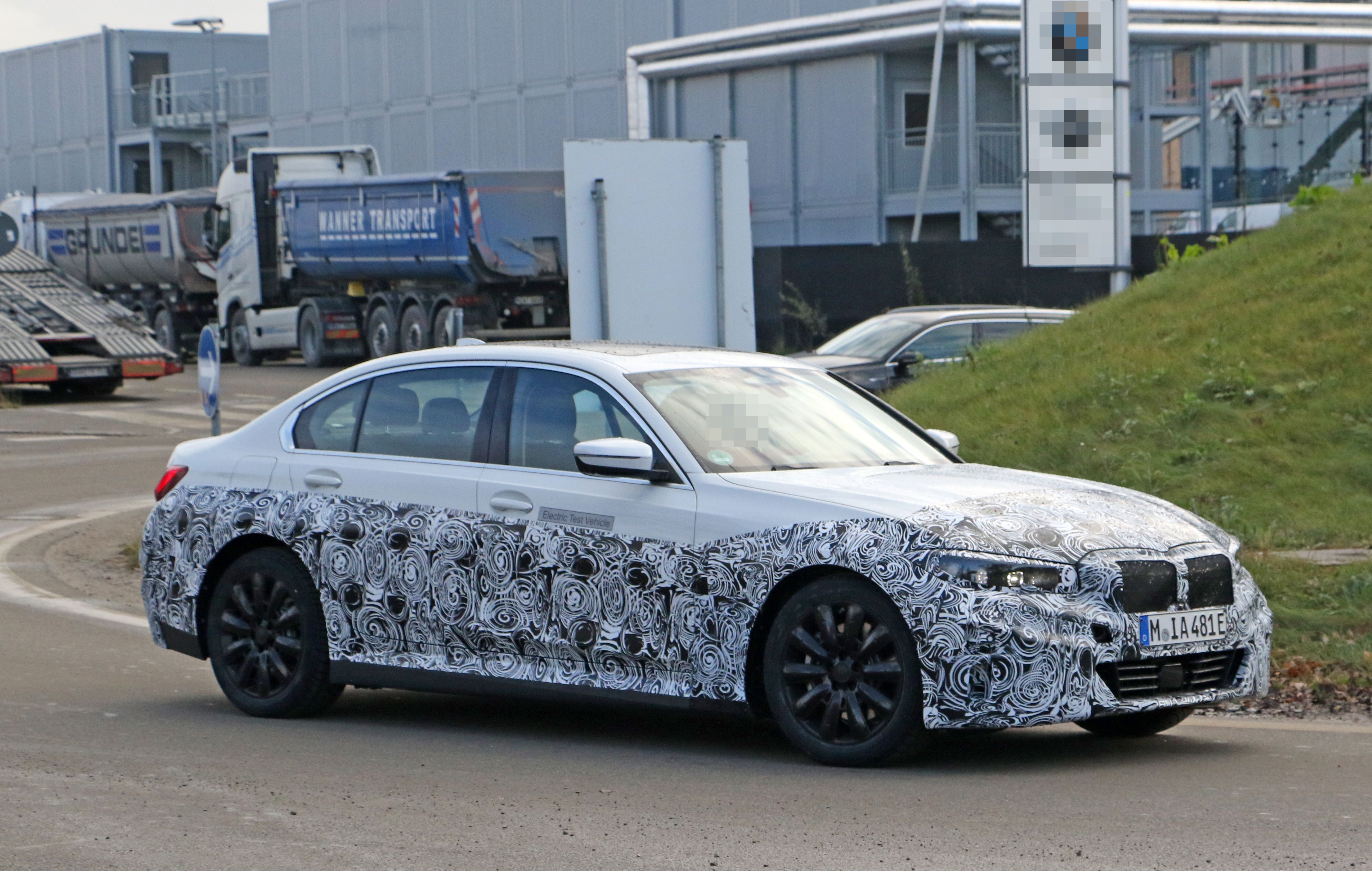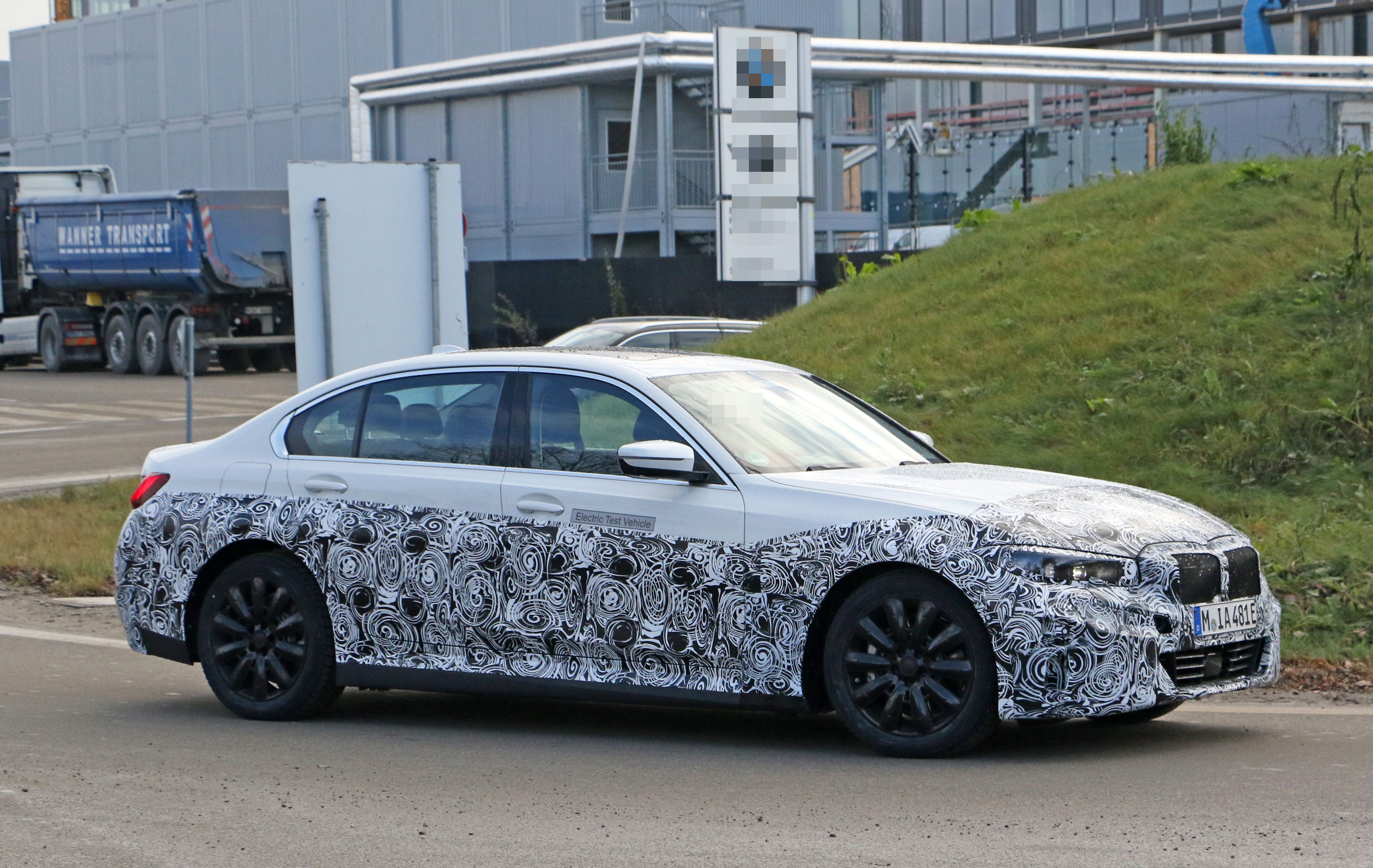The BMW 3 Series is arguably Bimmer’s most popular model, and it’s about to go electric. The all-electric 3 Series is one of the 25 electric and electrified models that BMW has in the pipeline, and while most of those models will probably end up being electric crossovers and SUVs, the 3 Series EV is arguably the most intriguing, in part because it’s shaped as a sedan and has big shoes to fill.
Recent spy shots of a heavily camouflaged 3 Series sporting “Electric Test Vehicle” stickers recently made their way into the Interwebs, providing us with all we need to know that the car under all the swirly bits is nothing else but the electric 3 Series. There’s no set timetable on when the electric 3 Series will hit the market, but with testing ongoing, it wouldn’t be surprising to see BMW debut the model this year ahead of a possible launch in 2021.
2022 BMW 3 Series Electric
- Make: Array
- Model: 2022 BMW 3 Series Electric
- [do not use] Vehicle Model: Array
Exterior
I’ll be honest. The “Electric Test Vehicle” stickers give away the mystery, don’t they? It’s one thing to have just one plastered on a test mule. It’s another to have them all over the prototype. Fortunately, even without the sticker spoiler, it is relatively straightforward to piece together the clues that are out in the open with this test mule.
We already know, too, what a closed kidney grille looks like after BMW unveiled the iX3 crossover last December 2019. The big question is what kind of grille design BMW is going to use on the 3 Series Electric. Is it going with the stylized version that the iX3 sported in its debut or is BMW going to use the incredibly ugly grille design that BMW unveiled in the iNext? You know where our money’s going.
Outside of the grille design, the rest of the front section appears to follow the same design qualities of the 3 Series family, though don’t be surprised if BMW decides to give the 3 Series Electric a stylistic twist since parts of the body will no longer need vents for engine cooling. That can be the case in the back, too. The exhaust pipes are not present in the test mule as you can see by the absence of cutouts in places where those pipes are normally located.
If BMW uses the LWB platform on the production electric 3 Series, it would make the model almost five inches longer than the standard 3 Series with an overall length of 190.1 inches.
The use of the LWB platform also feeds into the notion that BMW has its eyes set on offering the 3 Series Electric in the Chinese market since that’s the only market in the world where the 3 Series LWB is offered. That’s not to say that Europe and the U.S. won’t get an electric 3 Series.
Both markets will probably get something similar, though it’s unclear if BMW will offer the same model or if it will develop a 3 Series Electric that’s sitting on a standard-wheelbase platform. In any event, the longer platform is a smart choice since it’s better suited to accommodate the batteries that will power the 3 Series Electric.
Interior
There are no photos of the 3 Series Electric test mule’s interior. That’s not at all surprising, though it would’ve been cool if we caught even a tiny glimpse of it.
The first and probably the most important thing to highlight is the interior space. If the 3 Series Electric sits on a long-wheelbase platform, it’s not unreasonable to expect that it will offer more space in the cabin than the standard-wheelbase 3 Series, even with the car’s batteries in place.
On that end, the long-wheelbase 3 Series offers an extra 1.7 inches of legroom for rear passengers. That’s a byproduct of the increased length of the LWB 3er, which measures 190.11 inches. Depending on the size of the batteries, the 3 Series Electric could also offer as much as 17 cubic feet of cargo space in the back.
The interior layout and feel of the cabin should remain the same, too.
The dashboard setup should be similar to the 3 Series LWB. I’m a big fan of the 3 Series’ dashboard. I like how clean and premium it looks, the latter of which is likely due to the cool brushed metal-effect trim on the dash. I also like how neatly laid out all the buttons in the center console are. They’re grouped in sensible clusters, too, so you don’t have to worry about confusing which buttons serve which functions.
One thing I’m not particularly fond of is the plastic trim masquerading in a glossy piano-black finish. Fortunately, there are options to upgrade to varnished ash wood, unpolished oak, or even aluminum effect trims.
Options and accessories are big parts of the BMW 3 Series. Expect BMW to offer a treasure chest full of them in the 3 Series Electric, especially if it sits on an LWB platform.
Drivetrain
BMW has kept drivetrain details of the 3 Series Electric under wraps, though judging by what’s already been revealed with regards to its other electric vehicles, there’s reason to believe that the 3 Series Electric will have a similar drivetrain setup as some of its peers.
The output generated by this drivetrain adds up to 282 horsepower and 295 pound-feet of torque. These figures aren’t going to blow anyone’s head off, but they are significant enough for a car of the 3 Series Electric’s stature. Remember, the gasoline-powered, long-wheelbase 3 Series is powered by a 2.0-liter turbocharged four-cylinder engine that produces 181 horsepower and 221 pound-feet of torque. There’s a significant power difference between the two models — not the mention completely different drivetrains — that allows both to thrive in the same ecosystem, or in this case, the Chinese market.
The power generated by the 3 Series Electric’s drivetrain goes straight to the two rear wheels. No mention of performance times has come out, but considering that the four-cylinder engine-powered 3 Series LWB can sprint from 0 to 60 mph in the high seven-second range, it’s reasonable to expect that the 3 Series Electric, with its electric powertrain and rear-wheel-drive layout, can cover the same distance a lot faster than its gas-powered counterpart. A sprint-to-60-mph time of under six seconds isn’t unreasonable, is it? After all, the iX3 crossover is reportedly capable of covering that ground in around 5.5 seconds.
That’s an impressive number for a crossover, but since the 3 Series Electric is expected to be lighter and more aerodynamic — even in LWB form — there’s reason to be optimistic that the 3 Series Electric’s full range can reach up to 300 miles before it needs to be recharged.
All these numbers are predicated on the assumption that the BMW will give the 3 Series Electric the same drivetrain setup as the iX3. If the German automaker goes on a different route and offers a different battery and electric motor setup, then all bets are certainly off.
Prices
There’s word on how much the BMW 3 Series Electric is going to cost. We do know that here in the U.S., the BMW 3 Series can cost anywhere from $40,750 to $56,000 depending on the trim that’s chosen. Obviously, the 3 Series Electric is going to cost more than those models, owing to its longer wheelbase and all-electric powertrain.
So if the non-M version, top-of-the-line 3 Series M340i tops out at $56,000 with the xDrive setup, it wouldn’t come as a shock to see the 3 Series Electric fetch north of $60,000 or around 410,000 yuan in the Chinese market.
Unfortunately, that’s the sad reality facing all of us in the U.S. The 2020 BMW 3 Series Electric is rumored to be a China-only model. It would make sense because the model that’s based on — the 3 Series LWB — is only available in the Chinese market.
Hopefully, though, BMW offers the 3 Series Electric in other markets, including Europe and the U.S. It is, after all, an electric vehicle, and if there’s one thing we know about the European and U.S. auto markets, it’s that EVs are fast becoming the go-to car purchases among their residents.
Competition
Tesla Model 3
When the BMW 3 Series Electric arrives in China — and, hopefully, in other parts of the world, too — it will immediately face strong competition from a number of rival models, none more daunting than the Tesla Model 3.
Tesla’s mainstream electric sedan is set to take the Chinese market by storm. At the moment, the Model 3 is available in two battery sizes. The Standard Range trim comes with a 50-kWh battery pack and a single electric motor powering the rear wheels. Together, they produce a peak output of 340 horsepower and 330 pound-feet of torque. All that power goes to the two rear wheels, which then allows the Model 3 to accelerate from 0 to 60 mph in 5.6 seconds on its way to hitting a top speed of 130 mph. The Model 3 Standard Range can travel 220 miles on a single charge via the EPA test cycle and 237 miles via the WLTP test cycle.
If you want more from your Model 3, you can opt for the Model 3 Extended Range. This version uses a pair of electric motors and a 75-kWh battery pack, netting an output of 447 horsepower and 376 pound-feet of torque. It only takes 4.4 seconds for the Model 3 Extended Range to sprint from 0 to 60 mph before peaking at a top speed of 145 mph. This version of the Model 3 has a range of 322 miles in the EPA cycle and 348 miles in the WLTP cycle.
The Tesla Model 3 Standard Range is priced at $35,000 while the Extended Range costs a tick under $50,000. The prices are roughly the same in China, though Tesla does qualify for government incentives that can knock as much as $3,500 off the $50,000 domestic price tag. If BMW wants the 3 Series Electric to succeed in the face of the Model 3, it’s going to have to price the EV closer to the Model 3’s price tag. Any other scenario and we could be looking at Tesla dominating the EV market in China.
Read our full review on the 2020 Tesla Model 3
Audi A4 Electric
BMW isn’t the only German automaker that’s in the laboratory developing a future electric sedan that can compete with the Model 3. Longstanding rival Audi is also working on an electric version of the A4 sedan, and while that model isn’t scheduled to arrive until 2023, the development of the model has already begun.
On that note, there are very few details surrounding the A4 electric other than it will sit on Audi’s new PPE architecture, which is already in use by the automaker’s first-ever all-electric vehicle, the e-Tron. Whatever Audi’s plans are for the A4 Electric, you can be sure that it’s going to have the chops to compete against whatever model it lineups against, whether that’s the Tesla Model 3 or the BMW 3 Series Electric.
Read our full review on the 2020 Audi A4.
Conclusion
It’s one thing for BMW to announce its intentions to develop a roster of all-electric models. It’s another thing entirely for BMW to start developing the 3 Series Electric. If there’s one model that clearly signals that Bimmer is serious about its all-electric push, it’s the 3 Series Electric.
Expectations are understandably high, largely because of the 3 Series’ stature in BMW’s entire product lineup. It’s arguably BMW’s most popular model and certainly one of its best-selling ones, too. There’s a lot of pressure that comes with that, and you can be sure that BMW knows it. I’m bullish about the BMW 3 Series Electric and what it’s going to be like once it finally hits the market. Ask me why I’m bullish and I’ll tell you the same thing. BMW has no choice but to develop the business out of this model. The 3 Series Electric is going to be one of the faces of BMW’s all-electric push, and anything short of an extraordinary electric sedan is going to be a failure on Bimmer’s part. The pressure’s on for BMW to deliver, and if you know the automaker as well as we do, you know that it understands what all that pressure comes with.

